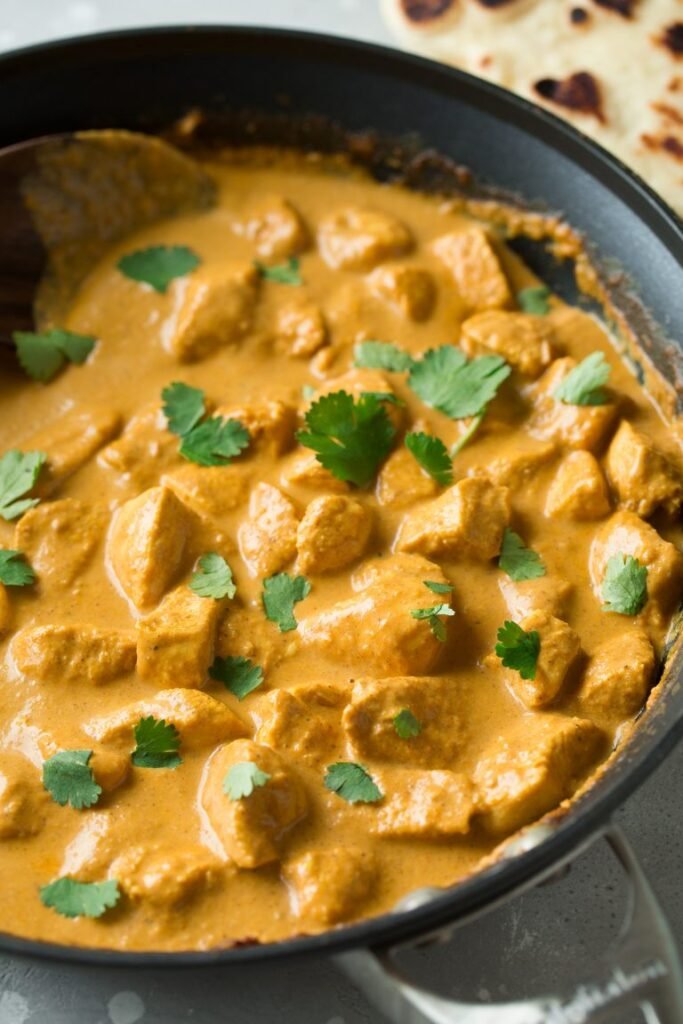Curries are a staple of Indian cuisine, and they make for delicious leftovers.
The problem is, reheating them can be tricky.
If not done right, your curry can end up dry or overcooked.
That’s why we’ve put together this guide on how to reheat curry using five different methods.

Importance of Reheating Curry
Reheating curry is important because it allows you to enjoy the dish multiple times without having to go through the entire cooking process again.
Plus, curries tend to taste better the next day after all the flavors have had a chance to meld together.
When reheating curry, it’s important to pay attention to the appropriate quantities that you’ll need for your serving size.
Additionally, storing and reheating leftover curry must be done properly; otherwise, it could cause food poisoning.
Now let’s dive into each of the five methods of reheating curry:
Reheating Curry in Microwave
The microwave is undoubtedly one of the most convenient ways of reheating food quickly. Here’s how you can use it for your leftover curries:
- First off, transfer the desired quantity of curry into a microwave-safe container with an airtight lid or cover.
- Sprinkle some water over the top of your curry before sealing.
- Place your container in the microwave oven and set it at 50% power level.
- Heat for 2 minutes and stir thoroughly before heating again.
- Continue doing this until heated through (usually takes 6-8 minutes total).
Safety precautions while microwaving include making sure that you remove any metal containers or utensils from inside before heating up.
Reheating Curry on Stove Top
Stovetop cooking has been traditionally used by Indians ever since they started cooking dietary staples alongside natural sources such as firewood or cow dung cakes outside their homes on earthen stoves.
Here’s how you can reheat your curry on a stove-top:
- Place your curry in a saucepan and cover it with a lid.
- Heat the pot over low to medium heat.
- Stir occasionally until heated through. Keep an eye on the consistency of the curry so that it doesn’t become too dry while heating.
You can use a double boiler method by placing your pan with the curry in another pan containing boiling water. The heat from steam will evenly distribute to prevent overheating or burning.
Reheating Curry in Oven
The oven works wonders when reheating food, but you need to be careful about selecting appropriate temperatures and cookware. Here’s how you can reheat curry using an oven:
- Preheat the oven to 350°F (or 175°C).
- Pour your desired quantity of curry into an oven-safe dish.
- Cover the dish with foil or another oven-safe covering.
- Place the dish in the preheated oven and let it warm up for 20 minutes.
- Stir once halfway through cooking time.
Ensure that your cookware does not crack or break while refrigerated curries are being warmed up slowly from their near-freezing state. Ensure that it is designed for safe use at high temperatures as not all dishes are suitable to withstand intense heat.
Reheating Curry under Broiler
A broiler can be used for reheating curries too, but only if you have already cooked meat filling such as chicken, lamb or beef veggies like potato or peas – otherwise, they should not be microwaved due to their high water content which could lead them toward becoming overly hot within.
Here’s how you can do this:
- Place small portions of leftover meat/vegetable filling across skillet surface coated previously with oil/butter
- Add broth/stock/water partially covering them until sizzlingly hot
- Once heated throughout add fresh tomato sauce or paste drizzles allowing them to blend in beautifully
- Continue medium-high heat cooking for another 5-15 minutes while stirring frequently, add salt and pepper to taste, serves hot
Broiling also requires vigilant attention since the heat can be very intense.
Reheating Curry using Instant Pot or Slow Cooker
An Instant Pot or slow cooker is a more modern way of reheating curries. Here’s how you can do it:
- Pour the desired quantity of curry into the Instant Pot/slow cooker.
- Add some water if required.
- Set on “warm” mode for 20 minutes.
- Check after 20 minutes to see if it’s heated through.
You must ensure that all electric devices are in a safe location and away from children’s reach. Never place anything like paper towels or rags into them as they will catch fire if they touch elements or switches.
Tips to Enhance Flavors While Reheating
To enhance your curry’s flavor when reheating follow these best practices:
- Adding freshly squeezed lemon juice will elevate flavor and provide acidity balance.
- Use preserved coriander paste with added garlic cloves and ginger slices, since this adds depth to your dish rather than regular chopped herbs.
- Strain pureed tomatoes first before adding them since their concentration won’t cause dishwateriness making everything else taste less coordinated
- Add some cream at the end of heating so that everything melds well together instead of remaining separate ingredients 5 Avoid using an excess amount of salt while heating as even subtle changes may affect spices’ balance within the dish.
Conclusion
Reheating curry require care from your side for an enjoyable experience throughout!
You have learned about five different methods including microwave, oven stove-top, broiling and electrical inspection tools such as an instant pot/slow-cooker – now you know which one is best suited for your leftovers based on what tools you have available.
Remembering to use proper containers and cookware throughout the process ensures that the curry’s flavor profile isn’t compromised once it’s reheated, always keeping a keen eye on heating time and temperature parameters in every method used!
Jenny has always been passionate about cooking, and she uses her platform to share her joy of food with others. Her recipes are easy to follow, and she loves giving tips and tricks to help others create their own unique culinary creations.

